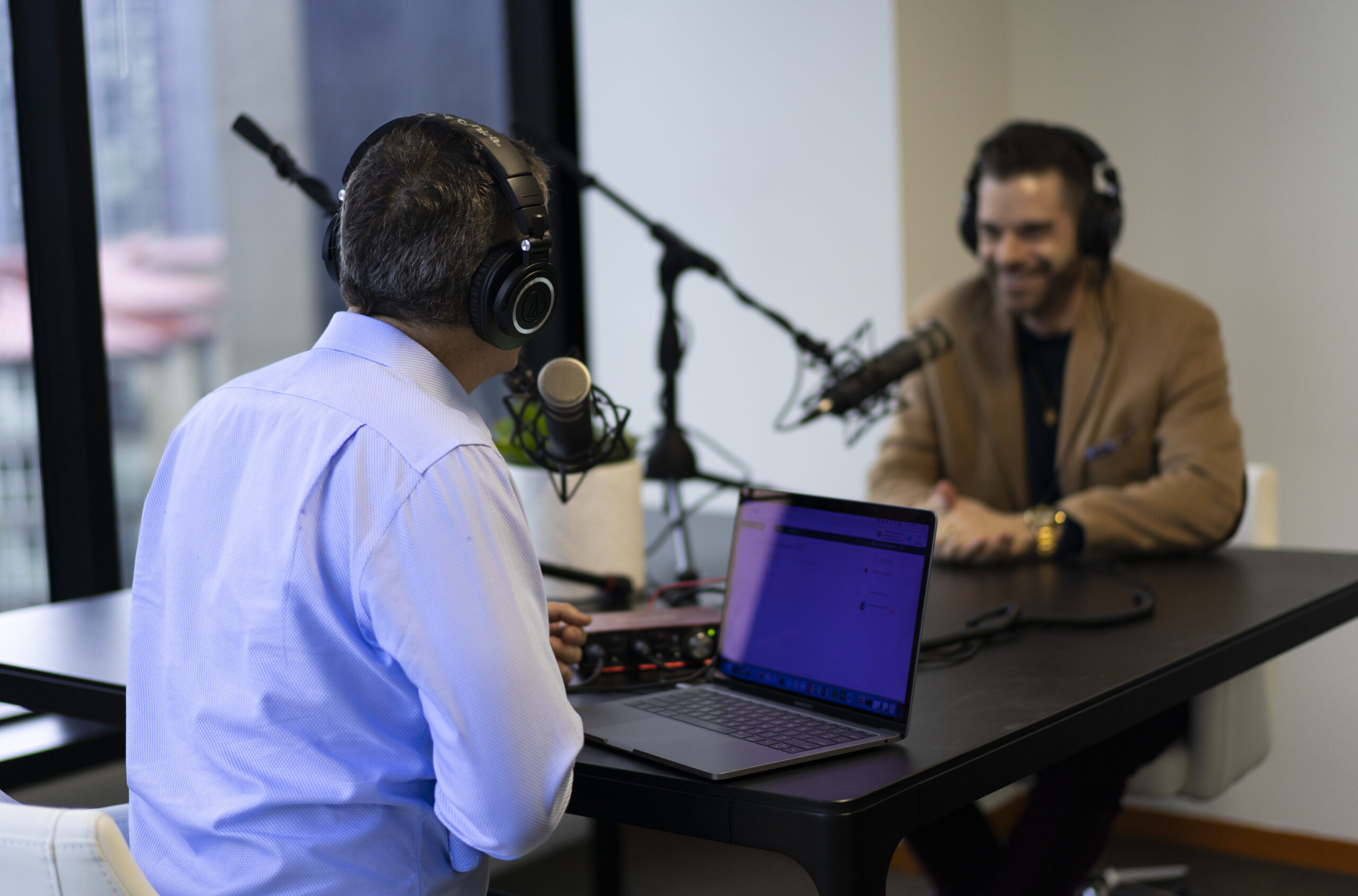Shawnna Sumaoang: Hi, and welcome to the Sales Enablement PRO podcast, I’m Shawnna Sumaoang. Sales enablement is a constantly evolving space, and we’re here to help professionals stay up to date on the latest trends and best practices so that they can be more effective in their jobs.
Today, I’m excited to have Uttam Reddy from Rackspace join us. Uttam, I would love for you to introduce yourself, your role, and your organization to our audience.
Uttam Reddy: Hi, my name is Uttam Reddy. I’m the Vice President of Global Sales Enablement and Strategy at Rackspace Technology. I joined last August and previously I’ve had a wide range of roles at large and small companies, private and public. Coming on board, it’s been an exciting time at Rackspace to see it grow.
SS: Absolutely. Uttam, I’m so excited that you’re joining us. Again, as you mentioned, you come with a wide breadth of experience across teams building the business, including revenue operations and sales operations. How would you say that that experience, in particular in those types of operational type roles, influence your approach as an enablement leader?
UR: No, thank you for that Shawnna. Those experiences shaped and molded my thinking of what enablement needs to do and what it means to the company, having a laser-like focus on business outcomes of coaching up our people. If I had to put one word on it, it would be relevance: business relevance for enablement.
Enablement isn’t just about training, which is what it used to be. Enablement is truly making our customer-facing Rackers, whether it’s customer success or client executives, making them successful. The roles that I had previous to Rackspace, running the business, owning a P&L, and being a Chief Operating Officer, help form business relevance to everything that we do.
SS: Absolutely. Now, given your experience as an operations leader and a member of the C-Suite, what advice would you have for sales enablement practitioners in how to build alignment with their executive leaders to maximize the impact of their efforts?
UR: Again, awesome question. I start with the end in mind. My approach is really cascade; I start with the company goals. Rackspace wants to become X, Y, and Z, so what are my stated goals? I work backward to what is the overall strategy for the company from our CEO and our executive leadership team, and then underneath it, what role does enablement play to align with these things?
It’s having the alignment from the company goals, all the way down to our frontline Rackers and doing the stakeholder management, making sure that everything that we’re doing informs the thing above it. As long as those things are in full alignment, we’re going to be successful.
SS: Absolutely. Now, on that note, in a recent panel discussion you shared your best practices on measuring sales enablement outcomes. In your opinion, what are some of the core metrics that listeners should be tracking in order to make sure that they’re demonstrating business impact?
UR: I love this question because back to the relevance and business impact, the things that we look at and I report to quarterly with our board of directors specifically is really, are we effectively attracting the right talent into sales and are we onboarding them successfully? Are we ramping them productively?
What does that mean? We’re looking at everything on a quarterly basis around everything from time to first sale as well as average deal size, time to second sale, average pipeline created. These are applied outcomes of everything we’re reinforcing in enablement.
Again, tying back to, am I helping a Racker that’s customer-facing carrying a quota? Am I making them successful? We maniacally measure this stuff. We do 90-day check-ins, we do 180-day check-ins with not only the sales manager, but the individual themselves. We’re always continuously improving, continuously learning with closed-loop feedback on the effectiveness of our enablement programs.
SS: I love that, I think that’s fantastic. Now, I’m hearing from a lot of sales enablement practitioners that a lot of their organizations are coming to them understanding, what is it that enablement can do? What are the initiatives enablement can do to help our organization protect and preserve the positive elements of our culture, particularly in the past year as everything shifted to virtual.
I wanted to ask you a question just as a bit of a follow-on to that. From your perspective, what are the things or initiatives that enablement can put in place to help organizations both preserve positive culture as well as to potentially even enhance it amongst revenue teams?
UR: No, that’s a terrific question. It’s hard. I’ll tell you with 15 months of COVID and remote work, sellers that are used to being in front of customers physically and having to adapt to virtual and being able to have that sales and winning culture, customer-facing culture, without physically meeting someone has been a challenge.
The culture here is very customer-obsessed and they’re very interpersonal. Everyone’s used to being in the headquarters or traveling and being in front of customers. It was a very strong adjustment for the enablement team to get creative around virtual and keeping connected with sellers because maintaining that sense of teamwork and camaraderie while still engaging people productively in Zoom was definitely something that we had to work on.
Some of the things that we did on our side was we tried to make it more fun, especially since everyone was working from home. We added some elements of gamification and prizes and points for completing different things and different tasks within our enablement program. We tried to add some fun factor into it, just to keep people smiling, keep people focused, keep people on task around what we were doing for enablement.
SS: That’s fantastic. Now you did talk about the transition, and I think virtual enablement really was uncharted territory for many sales enablement practitioners. You recently spoke about how your team at Rackspace dealt with all the unprecedented events from last year, and really came out on top. How have you approached this transition and what aspects of virtual enablement do you see being a continued practice as we returned to maybe in-person or a combined hybrid environment?
UR: What I would tell you that we learned at Rackspace, it started again before my arrival at the company last year, but taking a three-week in-person at the headquarters sales onboarding program and making it a hundred percent virtual, talk about pressure to go deliver something in a challenging environment.
I don’t think we’ll ever go back to 100% in-person anymore. There are definitely elements of it that can be done between pre-work, some of it virtual, some of it in-person. The human touch is very, very important. It’ll never fully go away. It’s part of embedding and assimilating people into our culture as they join the company, it’s an important piece.
We learned a lot about making things interactive, making things fun, making things live. We would do a lot of preparation with subject matter experts that were delivering our modules. We built out 150 different unique learning modules for our program last year virtually. There were four distinct learning paths by role, and I’ll tell you, we didn’t miss a beat because we tried to simulate as much of the physical class as we could and tried to make it that way. We had break rooms, breakout rooms that had break times, we made it feel as much as we could as the real class.
SS: That’s amazing, I love that. In that same talk, you used a phrase that I think is common, but I’d love to hear the context behind it. You mentioned diamonds are created under pressure. Can you explain what this meant to you in terms of sales enablement, and how that mindset sets your team up for success?
UR: Yes. For us, failure was not an option. There was a tremendous amount of pressure here from the business. Last year was a watershed event for Rackspace. We were reemerging from being privately held, private equity-backed, back into the public markets. Going public was a major milestone for us, so we had this pressure of the company wants to IPO in August.
COVID hit. We needed to continue training and we were aggressively hiring a lot of salespeople last year. We’re hiring at a fast clip, lots and lots of people who have never been to our headquarters who need to assimilate and learn to sell the Rack way, if you will. That’s our constituted selling methodology in the company.
These were tremendous amounts of pressure. When I say diamonds get created under pressure, coming out of all of these constraints and external pressures we created an award-winning sales enablement program. In fact, we were awarded a 2021 Stevie for Global Sales Enablement Program of the Year, we were bronze winners.
It was good external validation, good internal validation, good feedback from our actual Rackers that have been through the program. If we just did this without the pressure of the external factors, I don’t know if we would’ve gotten there.
SS: Well, congratulations on the award, very well-deserved. Thank you again so much for the time today.
UR: Awesome, thank you.
SS: To our audience, thanks for listening. For more insights, tips, and expertise from sales enablement leaders, visit salesenablement.pro. If there’s something you’d like to share or a topic you’d like to learn more about, please let us know. We’d love to hear from you.







